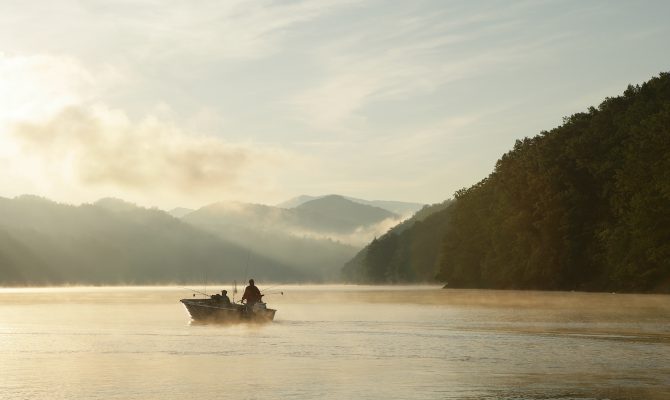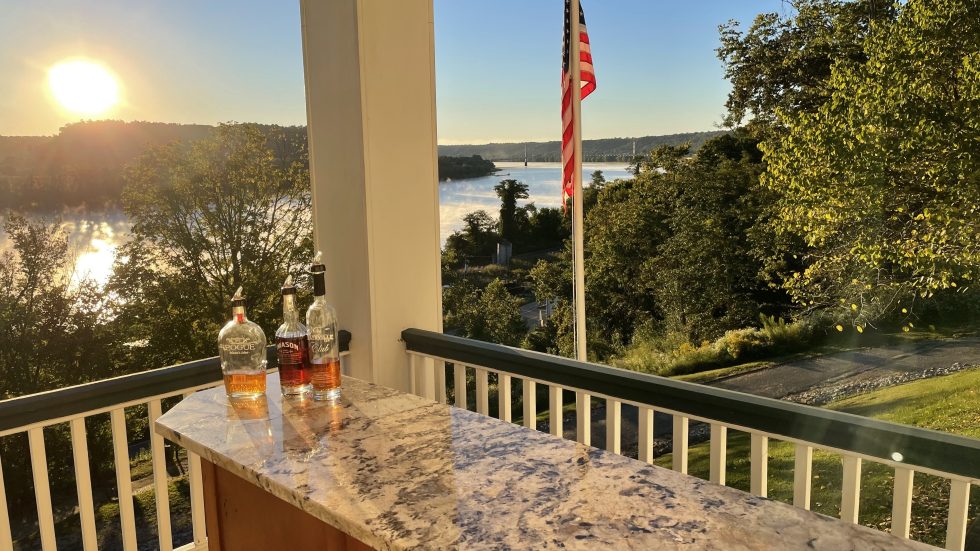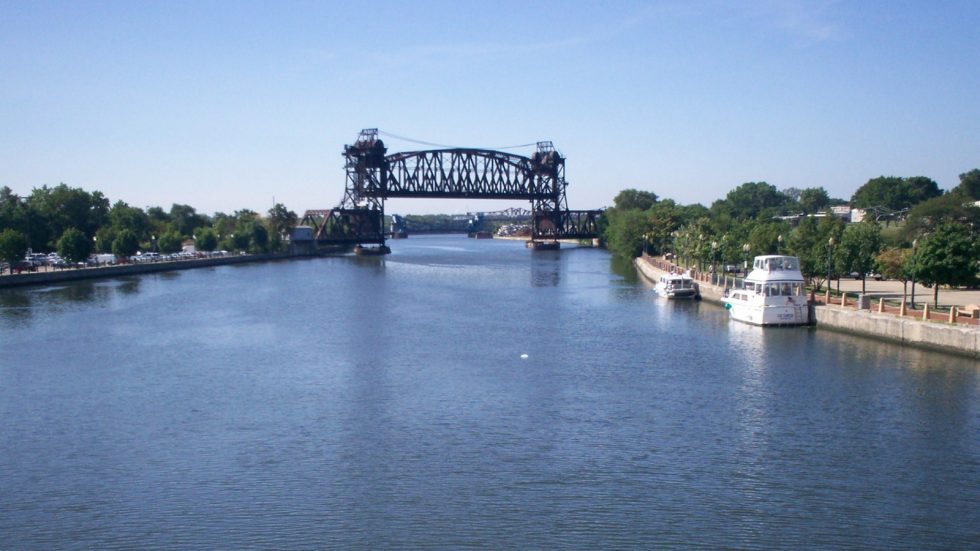The region has attracted visitors since pre-Civil War days, and today, the appeal of sports, crafts, entertainment and special events calls to the curious. But no matter what the travel brochures say, the real draw remains the lake and surrounding Blue Ridge Mountains. Traversing some of the most delightful and challenging terrain in the mid-Atlantic, Fontana Lake country is that sort of special place. During the spring and fall, the peaks and valleys are one vast easel of colors and designs; in winter the stark beauty is, if possible, even greater.
Boating here is superb. Powerboats and sailboats of all sizes are permitted on Fontana Lake, with docks and launch ramps located at various sites along the 240 miles of shoreline. Magnificent mountain vistas surround the water on all sides. And fishing doesn’t get much better, assuming you enjoy catching trout, bass, walleye, perch, sunfish and crappie, and the occasional Northern pike. But Fontana doesn’t give up its hold easily; it’s temperamental as a fishing lake. Clear water is the main culprit, causing fish to hold deep, often out of reach during daylight hours. Try fishing at night instead.
Power Shift
If you need a specific land-based lure to bring you to western North Carolina, it would have to be the Fontana Dam. A concrete wedge 480 feet tall and 2,365 feet wide, it is the highest dam east of the Rockies, blockading the Little Tennessee River and creating Fontana Lake on the southern border of Great Smoky Mountains National Park. The dam was built in record time during World War II to provide hydroelectric power for the nearby aluminum plant at Alcoa, Tennessee, and the atomic research going on at Oak Ridge.
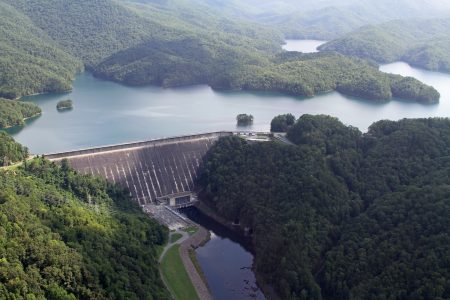
The construction required an impressive organizational effort. Because the site was located in remote mountains, railroad tracks into the area had to be laid before the dam could be built. Near the construction site, a village to house the workers and their families was erected. Workers toiled in three shifts, 24 hours a day. In November 1944, the lake began to fill; soon after, power generation started.
Visitors have two options at the dam. You can drive across the bridge and take an immediate left out to a pair of overlooks. From them you can enjoy a superb view of the lake above the dam and of the dam itself. Or, you can stop first at the visitor’s center, which offers an entertaining and educational introduction to hydroelectric power and the history associated with the building of Fontana. The powerhouse, reached via an incline tram, is also open to the public for tours.
Village People
What was at once the dam construction village is today Fontana Village Resort, which is about as far removed from the bustle of everyday life as you can imagine. Here, you won’t find traffic congestion or neon lights. What you will find is an assortment of recreational facilities set amidst mountain majesty and lake scenery.
The village caters to guests attracted by the prospect of alternately “roughing it” on a mountain holiday and cruising a pristine lake. Guests can choose from cottages with kitchenettes, rooms at the inn or campground sites. Dining is available at the inn. There’s also a cafeteria, pizzeria, snack bar, and village store with provisions for meals in your cottage or at cookouts. Fontana Village Marina rents pontoon boats, ski boats, 14-foot-long johnboats and canoes. For boaters who stay at Fontana Village, there are no launching fees.
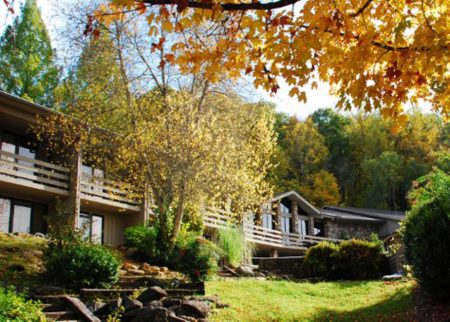
Resort activities include indoor and outdoor swimming, hiking, fly fishing, horseback riding, golf and its miniature cousin, tennis and special programs for children. Fontana Village also serves as a gateway to many nearby natural areas, including the Tuckasegee River. The headwaters in Panthertown Valley are approximately 50 miles from where it empties into Fontana Lake just below Bryson City. The river glistens and sparkles, providing recreation for waders, swimmers, tubers and paddlers.
Anglers have also discovered that the rocky shoals distributed between Sylva, North Carolina, and Fontana Lake offer some of the best smallmouth bass fishing to be found anywhere in the U.S.
National Heroes
There’s also the Blue Ridge Parkway. Driving has never been quite the same since America’s first scenic roadway was built in the 1930s. Rather than just motoring down the asphalt to get to a destination, visitors use the Blue Ridge Parkway to stop at points in between, taking in the beauty of the mountains. The pavement combines natural attractiveness with the pioneer history of gristmills, weathered cabins and split-rail fences. It would be hard to imagine a route offering a greater variety of near and distant views, or one better laid out to encourage leisurely travel.
The Blue Ridge Parkway begins (or ends) at the western entrance to America’s most popular national park. Great Smoky Mountains National Park receives up to 80 inches of rain a year, nearly as much as a rain forest. With 300 creeks flowing down steep, boulder-studded slopes, waterfalls large and small are everywhere. Nearly a dozen are accessible through day or overnight hikes. There is plenty of cold, fast water for fish. Seventy native species — as compared to 25 in Shenandoah National Park to the north — illustrate the great diversity of life for which the Smokies are renowned; they provide some of the finest fly-fishing to be found anywhere.
Located close by the park, the Great Smoky Mountains Railroad (GSMR) offers visitors a unique rail experience. Among the trips is the Tuckasegee River Excursion, which departs from Dillsboro and follows the river to Bryson City. This route passes by the site of the dramatic train wreck that highlighted the movie “The Fugitive.” Another GSMR excursion departs Bryson City for the Nantahala Gorge. It follows the Nantahala River and the boundaries of Great Smoky Mountains National Park, crossing a 791-foot-long trestle. A stopover at the Nantahala Outdoor Center allows passengers to participate in whitewater rafting and kayaking activities.
Located nearby, the Joyce Kilmer Memorial Forest was set aside in 1936 to honor the war hero who achieved a special immortality for the 80 words he strung together simply but unforgettably to create the poem “Trees.” The timberland is one of the few remnants of virgin forest left on the East Coast; no plants or trees, living or dead, may be cut or removed. As a result, the forest contains magnificent examples of more than 100 tree species, some more than 300 years old.
For the lake, the fishing, and the surrounding mountains and forest, Fontana Lake is a destination of particular splendor and should not be overlooked on your next boating vacation.
Resources
Blue Ridge Parkway, www.blueridgeparkway.org
Bryson City, www.greatsmokies.com/fontana
Fontana Dam, www.nps.gov/grsm/planyourvisit/fontanadam.htm
Fontana Dam & Visitors Center, www.visitnc.com/listing/fontana-dam-visitors-center
Fontana Village Resort, www.fontanavillage.com
Great Smoky Mountains National Park, www.national-park.com/welcome-to-great-smoky-mountains-national-park/
Great Smoky Mountains Railroad, www.gsmr.com
Joyce Kilmer Memorial Forest, www.visitnc.com/listing/joyce-kilmer-memorial-forest
North Carolina’s Smoky Mountains, www.visitsmokies.org/fontana-lake.html
Author: Mary Syrett is a contributor to HeartLand Boating magazine

